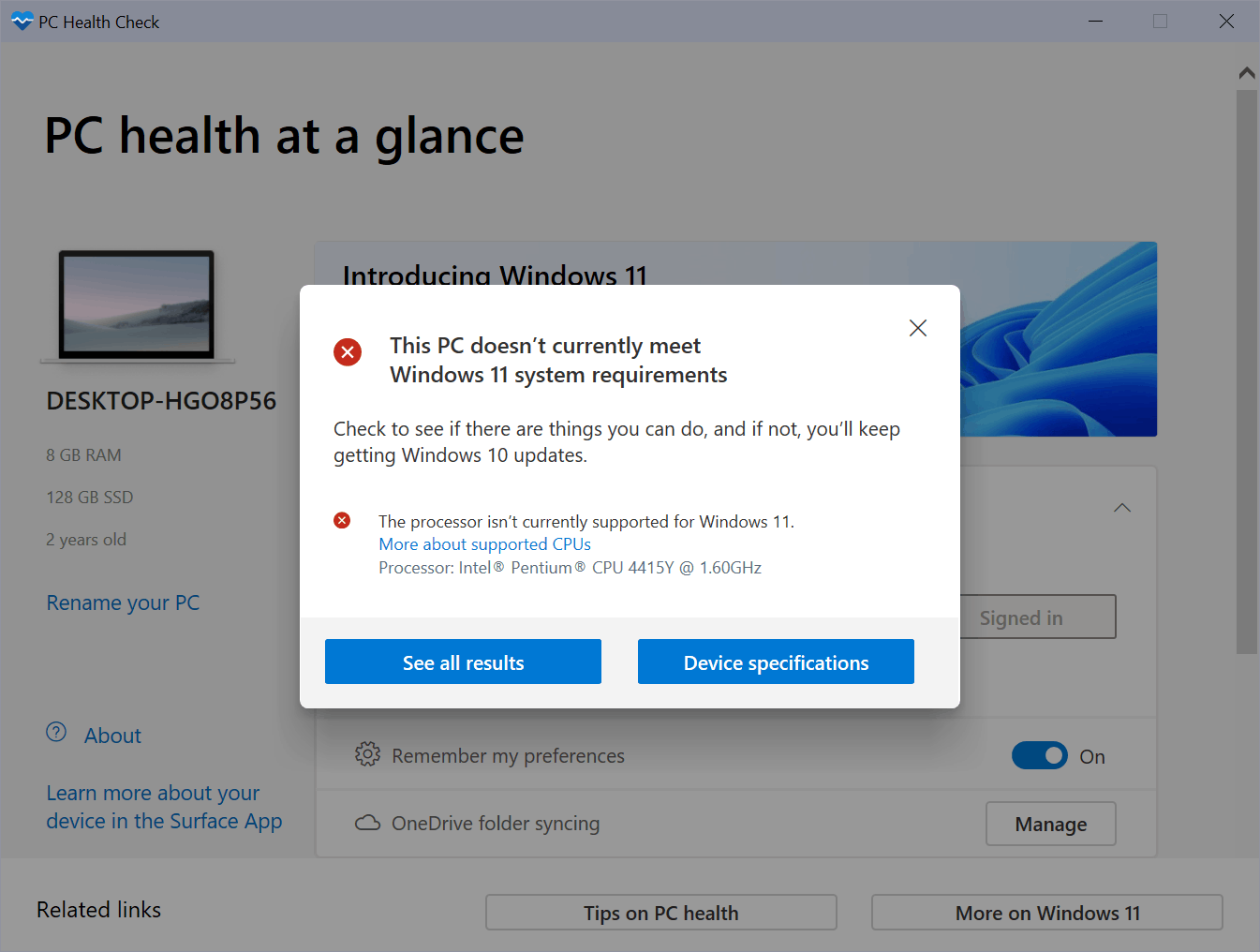Microsoft released Windows 11 in late 2021 and shifted the focus of development from Windows 10 to Windows 11. Customers with Windows 10 devices may upgrade to Windows 11 for free, but not all Windows 10 devices can be upgraded as Microsoft changed the new operating system's requirements.

While it is possible to bypass the requirements, it opens a can of worms as some features may not work properly or at all, and because it may happen in the future that some updates can't be installed over Windows Update on incompatible devices.
Most Windows 10 devices that do not meet the minimum system requirements will stay on that version of Windows, but what happens when Windows 10 runs out of support in 2025? Microsoft lists October 14, 2025 as the retirement date for Windows 10 Home and Pro (basically, all consumer versions of Windows 10). Some users will certainly replace their devices with new ones, which will likely include Windows 11 or are at least compatible with the new operating system.
Millions of devices will still be in use by 2025, and these can't be upgraded to Windows 11 officially, as Microsoft won't just chance the system requirements of the new operating system. Some users may upgrade to Windows 11 bypassing the restrictions.
The main issue that Windows 10 users will run into in October 2025 is that Microsoft won't create security updates for the operating system anymore. Windows 10 devices will continue to work like before, but there will be security issues that Microsoft won't fix after the last Patch Day on October 14, 2025. Other companies, including 0Patch, may step in and produce some security updates for Windows 10, but the company won't release patches for all issues and some may not be released for free.
Continuing to use Windows 10 after October 2025 may still be a valid scenario, for instance if the PC is not connected to the Internet, or if the security setup blocks most attacks before they can do any harm.
Most Windows 10 users whose devices are not compatible with Windows 11 have two main options, if they want to keep using the device:
- Upgrade to Windows 11, bypassing the system requirements check in the process.
- Switch to Linux.
Upgrade incompatible systems to Windows 11
Both options are not ideal from the perspective of a user who wants as little interruptions as possible. The first option, the unsupported upgrade to Windows 11, brings most settings and installed programs to the Windows 11 system. Most programs continue to work and data is not lost.
The main issue with the approach is that Microsoft does not support this officially. While Microsoft did release upgrade instructions for incompatible devices, it warns users that their devices "might malfunction" and "will no longer be guaranteed to receive updates, including but not limited to security updates".
The official disclaimer even states that damages are not covered under the manufacturer warranty and that PCs will no longer be supported in any way.
This PC doesn't meet the minimum system requirements for running Windows 11 - these requirements help ensure a more reliable and higher quality experience. Installing Windows 11 on this PC is not recommended and may result in compatibility issues. If you proceed with installing Windows 11, your PC will no longer be supported and won't be entitled to receive updates. Damages to your PC due to lack of compatibility aren't covered under the manufacturer warranty.
Windows Update works fine right now on incompatible Windows 11 devices, but there is a chance that this may not be the case in the future. Especially feature updates may become problematic to install, as users may need to bypass the restrictions again before these can be installed.
Make the switch to Linux
The second option that users have is to make the switch to Linux. The change requires more research and work on the user's end: a Linux distribution needs to be picked for that, which may require some testing prior to making the move. Most Linux distributions can be run as Live systems, which won't affect data that is on the PC's hard drives.
Here are the main issues that users will experience:
- Files need to be migrated manually to the Linux system. It is a good idea to back up important data before making any changes to a system. Use of an external hard drive or internal hard drive is advised.
- Many applications won't run under Linux; this depends on the programs that are used on Windows, and programs such as WINE may help, but there is a good chance that some programs can't be run at all.
- There is no data migration between programs, unless the programs support syncing.
- The handling, administration and management is different, and need to be learned. Many modern Linux distributions require little to no knowledge of the command line. While it is recommend for advanced users, most regular users don't need to worry too much about this if they pick a beginner-friendly distribution.
Now You: do you run Windows 10 devices that are incompatible with Windows 11? What will you do?
Thank you for being a Ghacks reader. The post What happens to all the Windows 10 devices that are incompatible with Windows 11 in 2025? appeared first on gHacks Technology News.
https://ift.tt/1TAht2ljZ
from gHacks Technology News https://ift.tt/73zAVuQ4G


No comments:
Post a Comment